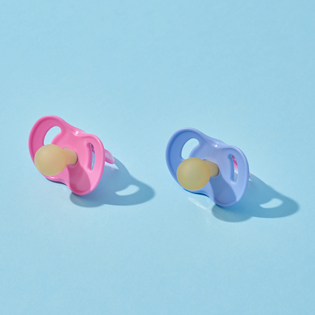Spotting the early signs of autism can be tricky because not every child will follow the same trajectory or display similar symptoms. Even the age at which you might discover signs of autism spectrum disorder (ASD) can vary widely. Some parents might notice symptoms in their baby before the first birthday, but it’s more common for signs to become obvious between the ages of 2 and 3.
Some cases of autism may be mild and not very noticeable until the child starts school. It’s even possible for kids to develop in an expected way until around 18 months, when the progress they made with certain milestones seems to stop or regress, resulting in the loss of once-mastered skills, such as babbling, waving, pointing or making other social gestures.
As for the official age range for checking on ASD, the American Academy of Pediatrics (AAP) recommends that all children be screened for the disorder when they’re 18 and 24 months old. It’s at this stage that early signs of autism in toddlers tend to be most apparent.
Read on for which symptoms to watch for and what to do if you think your child is showing any of the early signs of autism.
Early signs of autism in babies
You know your child best, so tune in to your infant’s behavior and development when keeping an eye out for early signs of autism in babies. There’s no need to wait for your pediatrician, although, as mentioned, the doctor should be screening for ASD signs at well-baby visits, including the 18-month checkup and the 2-year checkup. Here’s what to look for:
Resists cuddling or holding
Doesn't point at objects — a cat, for example — at the age-appropriate time to show interest
Avoids eye contact
Doesn’t seem to listen
Has difficulty babbling back and forth
May display facial expressions or gestures that don’t match what’s happening around him
Fails to respond to his name by 12 months
Early signs of autism in toddlers and preschoolers
Early signs of autism in toddlers and preschoolers include the ones listed above, so take note if your older baby avoids looking you in the eye, doesn’t respond to his name by the time he turns a year old, and doesn’t point, smile, babble or enjoy being held.
In addition to those early signs in babies, you might also notice the following early symptoms of autism in your older child:
Doesn't engage in pretend play by 18 months (like caring for a doll, for example)
Prefers to play alone and doesn’t seem to understand feelings in other people
Doesn't speak or speaks with an unusual rhythm or monotone
Gives unrelated answers to questions
Appears to ignore your request (hearing should be checked as part of a comprehensive exam)
Repeats certain words or phrases constantly
Throws frequent temper tantrums in response to minor changes in routine
Intentionally — and repeatedly — inflicts harm on himself (such as banging his head)
Acts obsessively interested in something — a rug’s pattern or the spinning wheels on a toy
Moves spastically — flaps hands, rocks, or spins his body in a circle
Reacts to sounds, smells or touch in an abnormal way
Has unusual food preferences
What should I do if my baby or toddler is showing early signs of autism?
Don’t delay if you notice any of the early signs of autism in your baby, toddler or preschooler. If your child is really struggling to fit in and his differences are interfering with his life, or if you are consumed with a feeling that something just isn't right, check in with your child’s pediatrician.
If the doctor suspects a problem, your child will be scheduled for a thorough checkup to rule out other conditions, such as lead poisoning, hearing loss or certain learning disorders that may explain the symptoms.
You may end up seeing a child psychologist, a pediatric neurologist, a speech therapist, a developmental pediatrician or another professional who can evaluate your child’s thinking skills, language level and motor skills.
One common tool that pediatricians and other autism specialists use is called the M-CHAT-R, which stands for Modified Checklist for Autism in Toddlers. The M-CHAT-R is a series of questions for autism screening in the toddler set (ages 16 to 30 months) that can evaluate a child’s risk for ASD. Want to give the assessment a try at home? Click through this questionnaire and decide for yourself.
Noticing early signs of autism doesn’t always end with an ASD diagnosis, since some of the symptoms can mimic those of other conditions (like hearing loss and lead poisoning).
But if autism is a possibility, it’s always best to contact your pediatrician and get help as soon as you can. With early intervention and therapy, great strides can often be made in a child’s behavior, learning and development.











































 Trending On What to Expect
Trending On What to Expect





